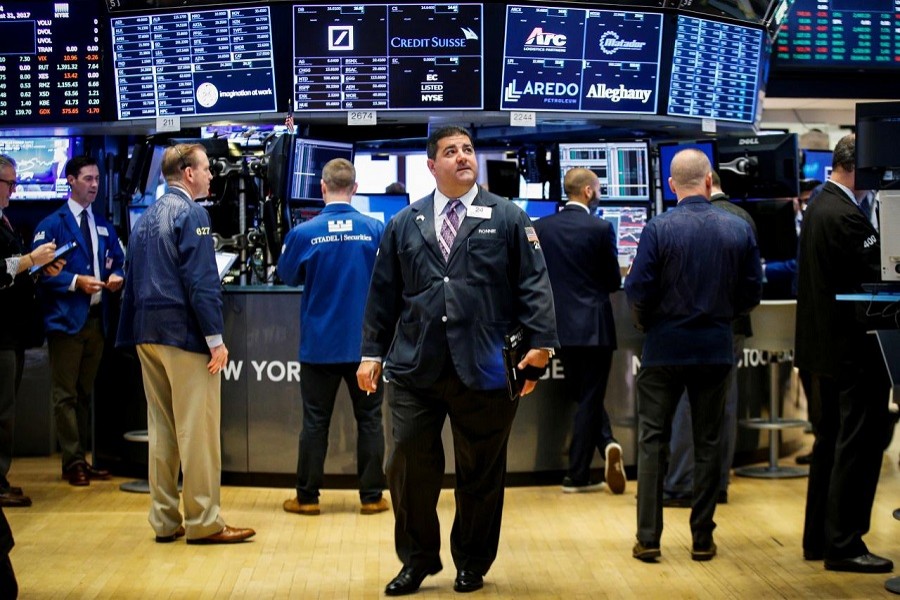US investors are not rewarding companies for generating good earnings consistently, opting instead for a stockpicking strategy that might be called “growth at a high cost.”
High-quality stocks selected for their strong balance sheets and stable earnings have appreciated just 12 per cent this year, according to Goldman Sachs Group Inc (GS.N), while the broader S&P 500 .SPX benchmark index has returned 13.8 per cent.
But investors cannot seem to stop throwing money at companies improving their sales fastest: a group of such equities tracked by Goldman Sachs has surged 20 per cent. Put another way, discriminating investors who have chosen companies with stable earnings prospects are being punished.
This lagging interest in quality stocks has even whipsawed well-known fund managers; Whitney Tilson said this week he was shutting down his Kase Capital Management LLC hedge fund.
“Historically, I have invested in high-quality, safe stocks at good prices as well as lower-quality ones at distressed prices,” Tilson wrote to investors.
“Given the high prices and complacency that currently prevail in the market, however, my favorite safe stocks (like Berkshire Hathaway (BRKa.N) and Mondelez (MDLZ.O)) don’t feel cheap, and my favorite cheap stocks (like Hertz (HTZ.N) and Spirit Airlines (SAVE.O)) don’t feel safe. Hence, my decision to shut down.”
Yet some managers are betting that complacent markets could be shaken from their zombie-like slumber as easy monetary policy and its backdrop of lower interest rates comes to an end.
“In an environment like we’re in now - where no one really cares what things are worth - you may underperform, but over time reality will set in,” said Sean O‘Hara, director at Pacer Financial Inc. “It always does.”
REVERSAL OF STIMULUS
O‘Hara said quality investments underperform when investors are willing to buy stocks without regard to their value, and that markets have been supported by the U.S. Federal Reserve’s extraordinarily loose policies.
Earlier this month, the Fed, as expected, said it would begin to reverse some of those policies by gradually reducing its bond holdings.
Pacer Financial is one of a several investment firms betting that quality will matter again. Its “Cash Cows” ETFs buy companies with strong cash flows and healthy balance sheets.
Goldman Sachs’ global investment research unit included companies such as retailer Ross Stores Inc (ROST.O), pharmacist CVS Health Corp (CVS.N) and oil driller Schlumberger NV (SLB.N) in its high-quality group earlier this year.
Yet these companies have mostly not been star performers.
The market has been led by so-called “FANG” stocks - like Facebook Inc (FB.O), Amazon.com Inc (AMZN.O), Netflix Inc (NFLX.O) and Google parent Alphabet Inc (GOOGL.O) - and a small winner’s circle of lesser-known names like Celgene Corp (CELG.O) and Equinix Inc (EQIX.O).
These companies have all enjoyed robust sales growth in a U.S. economy that’s below its boiling point, even as many factors disqualify some of them as quality stocks. Netflix has had 12 straight quarters of negative free cash flow, and the company warned it may not see positive free cash flow “for many years” as it invests in original content like the science-fiction drama “Stranger Things.”
Still, its subscriber growth continues to exceed estimates, and the stock has rocketed more than 45 per cent this year.
LUXURY OF GROWTH
Investors are paying a premium for the luxury of revenue growth: $24 for every dollar of earnings per share anticipated over the next 12 months, compared to $20 for quality names and $13 for high adjusted free-cash-flow yield equities, according to Goldman Sachs data.
Raffaele Savi, a portfolio manager for BlackRock Inc’s (BLK.N) $647 million Global Long/Short Equity Fund (BDMAX.O), said strong revenue growth is “more rare than at many points in the past,” given U.S. gross domestic product growth averaging around 2 per cent annually. The fund’s recent performance commentary said investors have been shunning company fundamentals.
With the Fed’s interest-rate hiking cycle taking hold, investors are bracing for market dynamics to change.
“When you see these huge headlines on big investors and hedge funds throwing in the towel because they can’t make sense of the market, that is a sign that things are about to turn,” said Guggenheim Partners LLC global chief investment officer Scott Minerd.
Part of the reason quality does not work as well as it once did may be that more assets follow “quantitative” funds that rely on the same statistics measuring quality, said Brian Hayes, equity strategist at Morgan Stanley & Co LLC (MS.N).
Plus, it’s harder for investors to assess what an earnings report is saying. Technology giants, for instance, derive more of their worth these days from services, patents and brand value, intangibles that can be hard to value.


